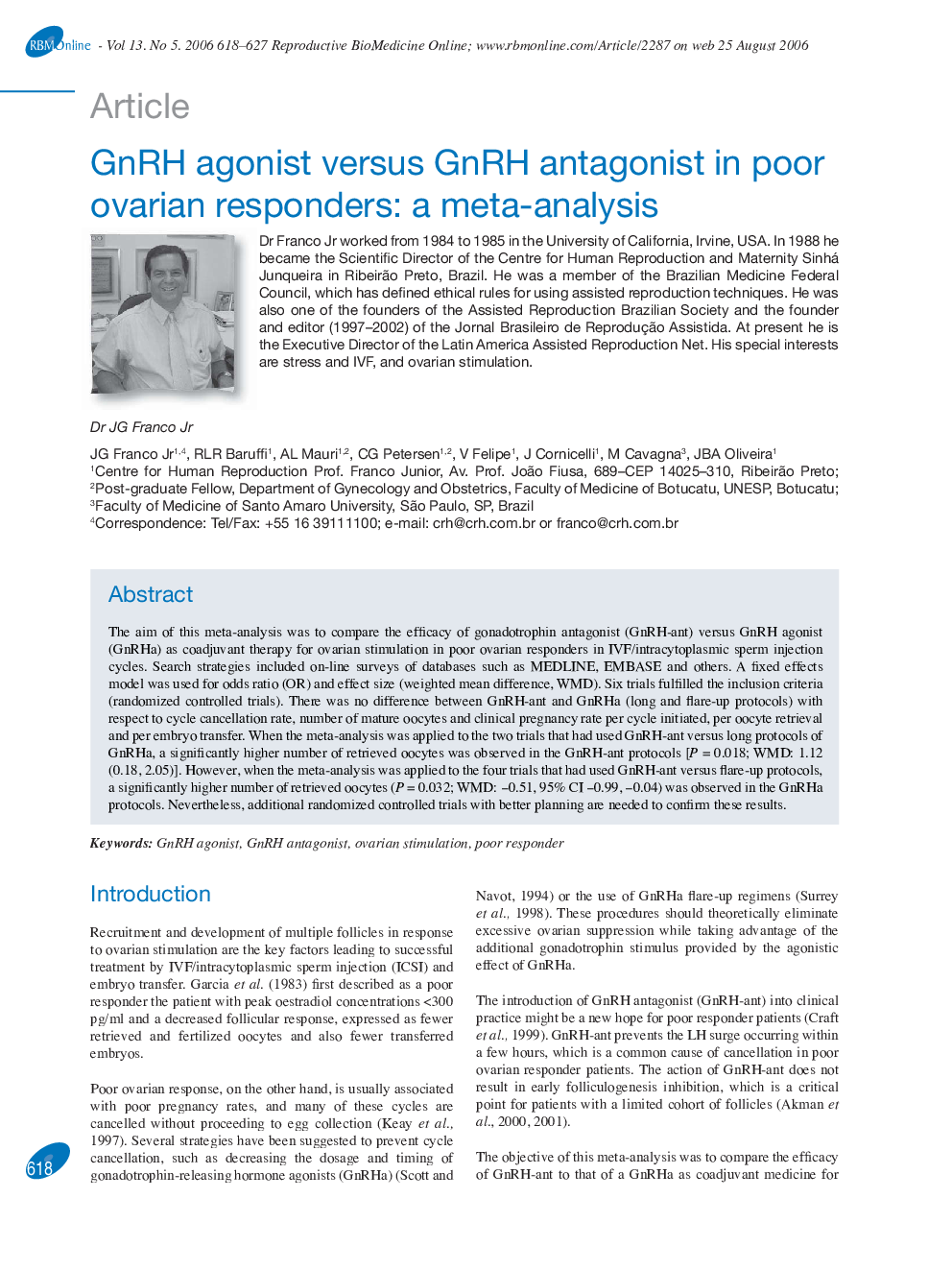| Article ID | Journal | Published Year | Pages | File Type |
|---|---|---|---|---|
| 3973534 | Reproductive BioMedicine Online | 2006 | 10 Pages |
The aim of this meta-analysis was to compare the efficacy of gonadotrophin antagonist (GnRH-ant) versus GnRH agonist (GnRHa) as coadjuvant therapy for ovarian stimulation in poor ovarian responders in IVF/intracytoplasmic sperm injection cycles. Search strategies included on-line surveys of databases such as MEDLINE, EMBASE and others. A fixed effects model was used for odds ratio (OR) and effect size (weighted mean difference, WMD). Six trials fulfilled the inclusion criteria (randomized controlled trials). There was no difference between GnRH-ant and GnRHa (long and flare-up protocols) with respect to cycle cancellation rate, number of mature oocytes and clinical pregnancy rate per cycle initiated, per oocyte retrieval and per embryo transfer. When the meta-analysis was applied to the two trials that had used GnRH-ant versus long protocols of GnRHa, a significantly higher number of retrieved oocytes was observed in the GnRH-ant protocols [P = 0.018; WMD: 1.12 (0.18, 2.05)]. However, when the meta-analysis was applied to the four trials that had used GnRH-ant versus flare-up protocols, a significantly higher number of retrieved oocytes (P = 0.032; WMD: −0.51, 95% CI −0.99, −0.04) was observed in the GnRHa protocols. Nevertheless, additional randomized controlled trials with better planning are needed to confirm these results.
